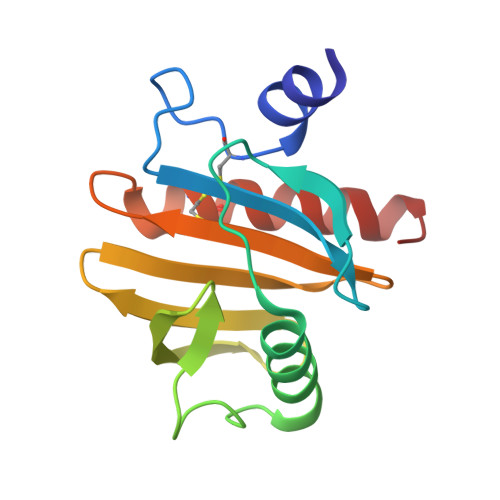Two Distinct Conformations in Bet v 2 Determine Its Proteolytic Resistance to Cathepsin S.
Soh, W.T., Briza, P., Dall, E., Asam, C., Schubert, M., Huber, S., Aglas, L., Bohle, B., Ferreira, F., Brandstetter, H.(2017) Int J Mol Sci 18
- PubMed: 29035299
- DOI: https://doi.org/10.3390/ijms18102156
- Primary Citation of Related Structures:
5NZB, 5NZC - PubMed Abstract:
Birch pollen allergy affects more than 20% of the European allergic population. On a molecular level, birch pollen allergy can be linked to the two dominant allergens Bet v 1 and Bet v 2. Bet v 2 belongs to the profilin family, which is abundant in the plant kingdom. Importantly, the homologous plant profilins have a conserved cysteine motif with a currently unknown functional relevance. In particular, it is unknown whether the motif is relevant for disulfide formation and to what extent it would affect the profilins' structural, functional and immunological properties. Here we present crystal structures of Bet v 2 in the reduced and the oxidized state, i.e., without and with a disulfide bridge. Despite overall structural similarity, the two structures distinctly differ at their termini which are stabilized to each other in the oxidized, i.e., disulfide-linked state. These structural differences translate into differences in their proteolytic resistance. Whereas the oxidized Bet v 2 is rather resistant towards the endolysosomal protease cathepsin S, it is rapidly degraded in the reduced form. By contrast, both Bet v 2 forms exhibit similar immunological properties as evidenced by their binding to IgE antibodies from birch pollen allergic patients and by their ability to trigger histamine release in a humanized rat basophilic leukemia cells (RBL) assay, independent of the presence or absence of the disulfide bridge. Taken together our findings suggest that the oxidized Bet v 2 conformation should be the relevant species, with a much longer retention time to trigger immune responses.
- Department of Molecular Biology, University of Salzburg, Salzburg 5020, Austria. waituck.soh@sbg.ac.at.
Organizational Affiliation:
















